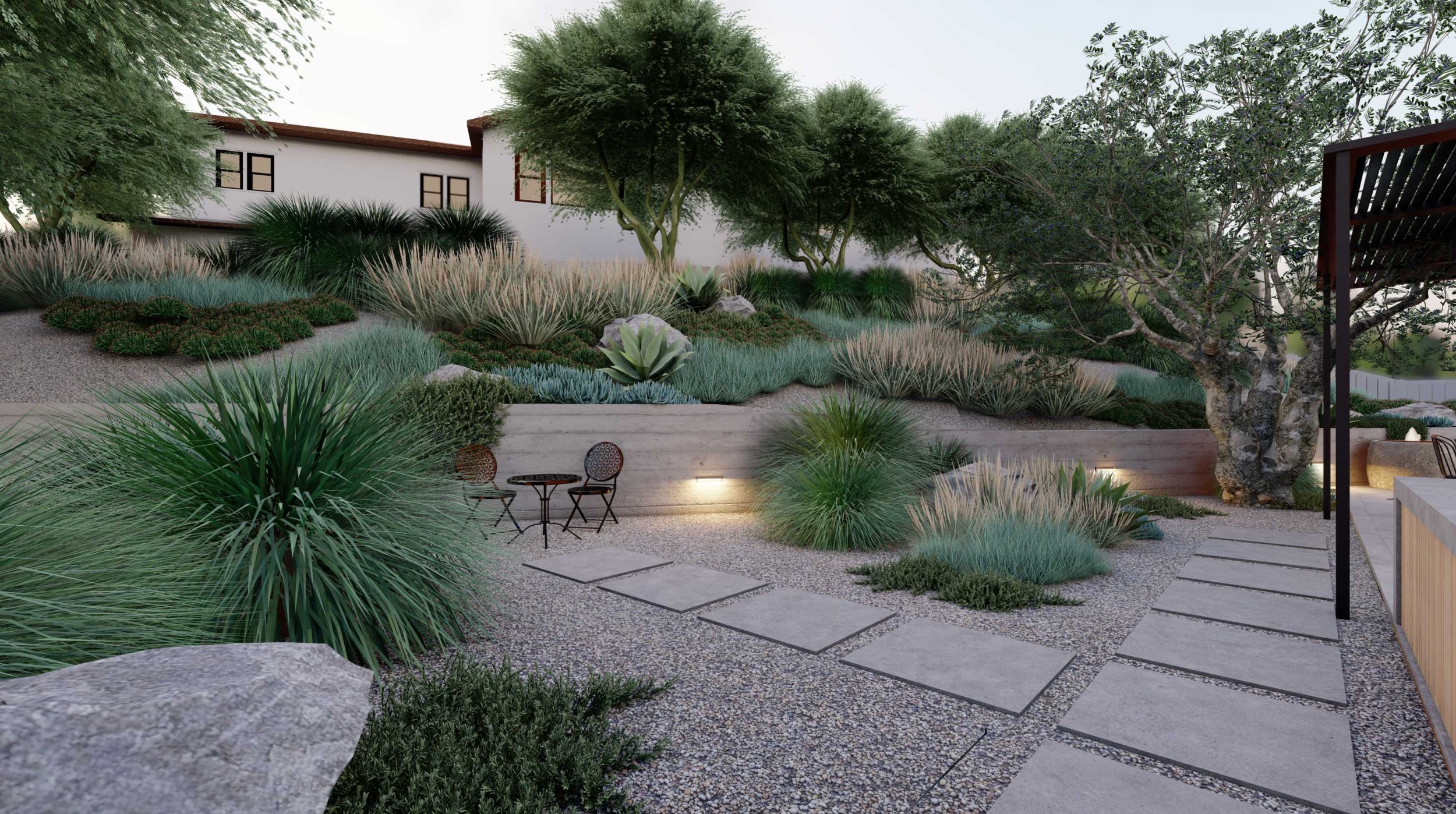A Biased View of Landscapers
Table of ContentsThe Of LandscapersSome Known Facts About Landscapers.Landscapers Can Be Fun For AnyoneThe smart Trick of Landscapers That Nobody is DiscussingThe Best Guide To LandscapersHow Landscapers can Save You Time, Stress, and Money.
- A garden attribute where water is represented by an accumulated rock product, generally a gravel or granite. These are most generally discovered in modern and Japanese garden layout.- A rock or flagstone patio, course, or walkway built without a concrete base. The base would be compressed gravel and the joints would be an accumulation or walkable ground cover. - A rock maintaining or totally free standing wall surface built without making use of mortar. A very experienced mason is required for a dry pile rock wall surface. Most wall surfaces in Rose city are not dry stacked, even if they appear to be. - An underground framework that accumulate water and permits it to slow percolate into the soil around it.
Landscape design that is suitable with a sites' atmosphere in both appearance and sustainability without unfavorable impacts to the atmosphere. Bordering in the landscape is a line of demarcation that develops visual rate of interest in the yard by separating one sector from another section.
Areas can additionally have a feeling of "enclosure" offered by trees, other growings, fencings, or screens. The landscape near the access to a building.
What Does Landscapers Do?

The aspect in a landscape design or location in a landscape that is implied to be most prominent. The focal factor can be a plant, boulder, sculpture, gathering room, or other landscape feature.
:max_bytes(150000):strip_icc()/GettyImages-154046398-c39f1daf45a84601b328d78ed8630660.jpg)
Getting The Landscapers To Work
Reduced plants that are permitted or motivated to spread over an area. Can refer to any "tough" yard aspects including statuary or boulders but most commonly is made use of to refer to courses, outdoor patios, and walls - Landscapers.: Height difference in between the degree of water in a pond (or the degree of the pump if it rests outside the pond) and the upper electrical outlet of water which affects performance of the water pump in gph (gallons per hour).
A chemical used to regulate weeds. Fencing boards that run horizontally, frequently used in modern-day or Japanese-inspired landscape styles. Lines that define areas within a landscape idea. These often expand from corners or key attributes of an existing structure. Correct use of imaginary lines can aid read here the landscape feel connected to the home and various other elements.
Conventional PNW landscapes are informal. A plant that spreads more than preferred, or into habitats where it does damages.
The Single Strategy To Use For Landscapers
Smart irrigation controller evaluations and referrals here. 2-D rendering of the proposed irrigation system. Can include head placements and protection, pipe sizing, GPM specs, and materials needed to install this system. An irrigation plan is typically unnecessary for houses however is typical for industrial jobs. Certified expert who develops landscapes, schooled in engineering and architecture as well as in horticulture.
The expert who intends and creates landscape jobs, typically at a property or little commercial degree with the significant design motivation on plantings. Landscape developers normally have much less schooling than Landscape Architects and are not accredited. A completed landscape layout, describing all aspects for the great post to read new landscape. This generally takes the type of a drawing theoretically.
Calcium material made use of to increase the pH in dirt, which will make it much less welcoming to moss (Landscapers). A water tight HDPE product used beneath fish ponds, streams and waterfalls in water functions. Making use of numerous growings of the same range to fill out an area in the landscape. This can decrease upkeep and water use in the yard.
A mix of cement, sand, and water that is utilized in rock masonry for setting stones and joints. A layer of garden compost or bark dirt applied at the base of a plant. A mass planting of moss. A plant that was existing in a geographic area prior to people started altering the landscape.
Getting The Landscapers To Work
Exactly how the garden or a garden component is arranged in connection to an existing or new function or to an instructions. Turfs that are not mowed but expanded in landscapes as perennials.

Tiny round gravel. Plants that supply seasonal interest and after that die back in the wintertime. Annuals do not come back the complying with period, yet perennials do. Winter yard that is the most typical lawn grass in Rose city, OR et cetera of the PNW.An open roofed structure over a patio area or various other landscape feature.
The most usual landscape crushed rock in the PNW. Area of the landscape developed to manage rainfall water till it can saturate right into the ground.
Developing a yard function consisting mostly of rocks with growings that match and can flourish in the rocky environment. Lawn sprinkler head design that turns a stream of water across an area.
The Greatest Guide To Landscapers
